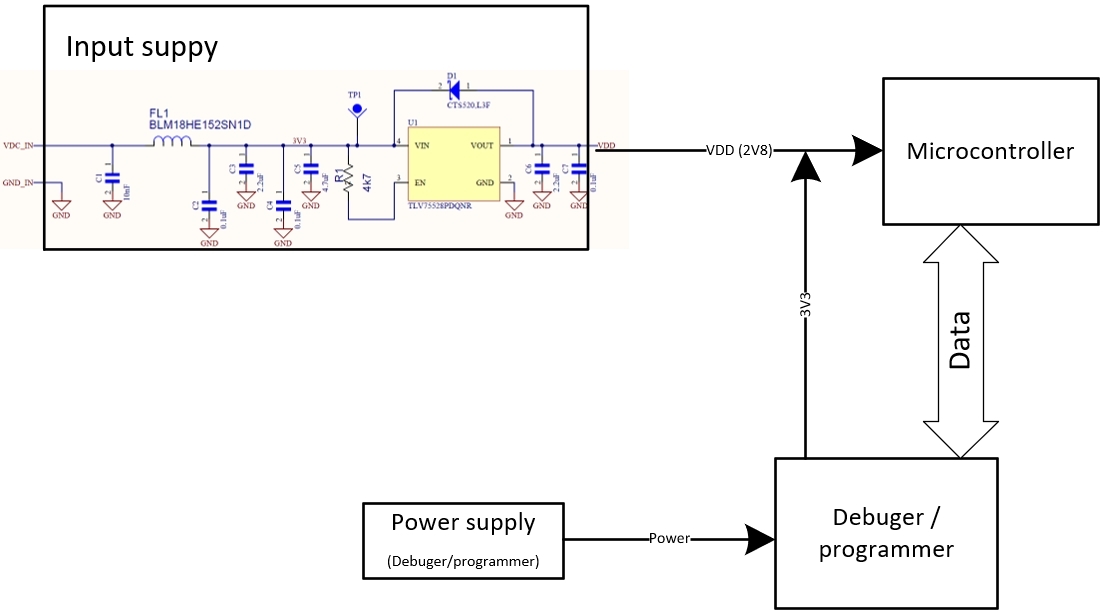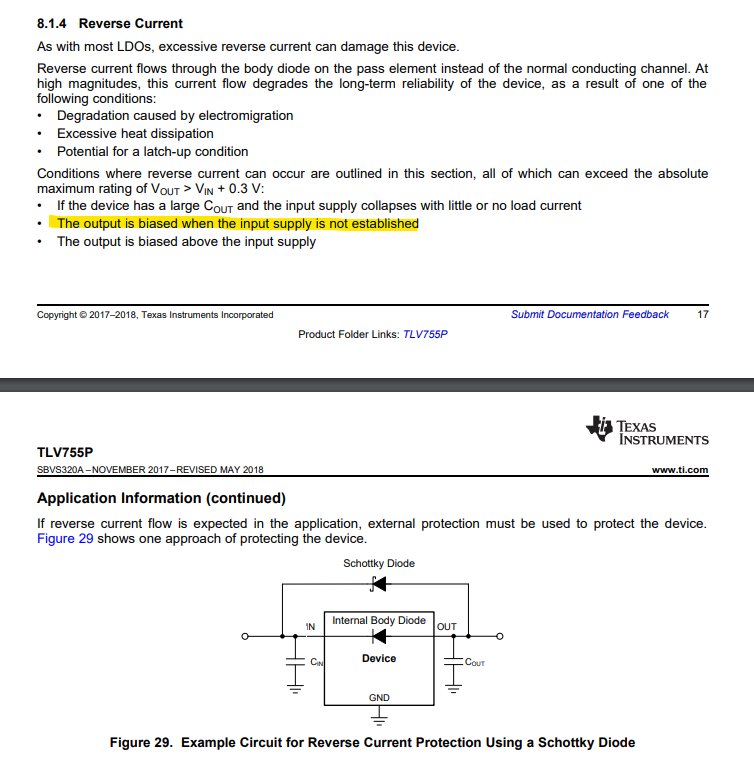Hi, In my design I used a TI LDO regulator TLV755P series (TI PN: TLV75528PDQNR).
I need your feedback about the LDO output capacity & restriction. Is there a problem if we apply a voltage to the regulator output without applying voltage to the regulator input?
The reason for this request is that the programmer of the microcontroller can apply a voltage on the output pin of the regulator. See the diagram below.
Conditions:
- No power at VDC-IN
- 3.3 volts from the programmer unit apply to the LDO output pin
(resume, 0 volt LDO iinput pin and 3.3 volts apply to the output LDO pin.)




